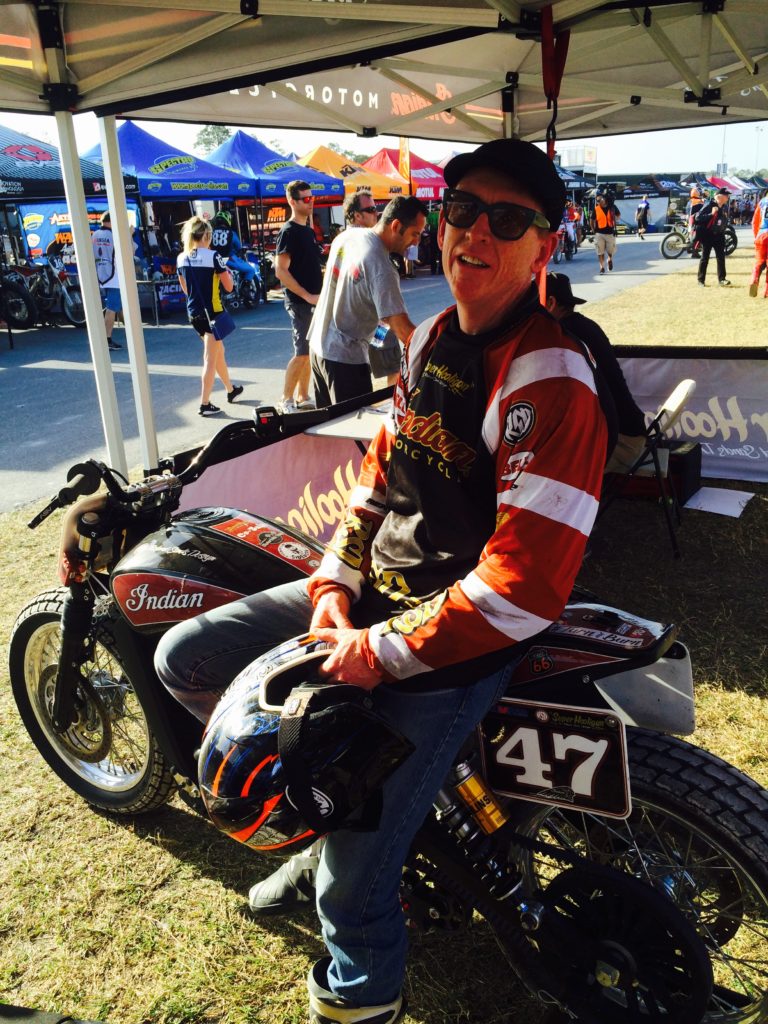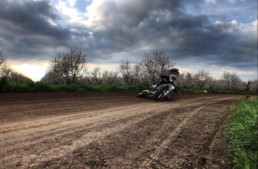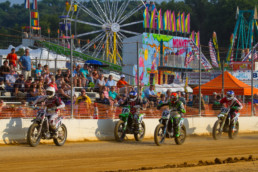By Any Means Necessary
She's got all the subtlety of a sawed-off shotgun.
Yeah, nothing says American badass like a Pro Twins bike.
Ya gotta be a fast hombre to make 'The Main' at a National.
It means you're one of the elite sixteen.
The moments before 'The Main' always humble him.
Bright lights, TV cameras, and packed grandstands will do that.
He says he feels numb before the start,
that he is just cruising on autopilot until the ten-second board goes up.
James Monaco had dreamt of this moment since he was a kid,
now he is lining up with the best flat track racers in the world,
some of whose posters, like Bugs Pearson & Jake Johnson,
still grace his bedroom walls.
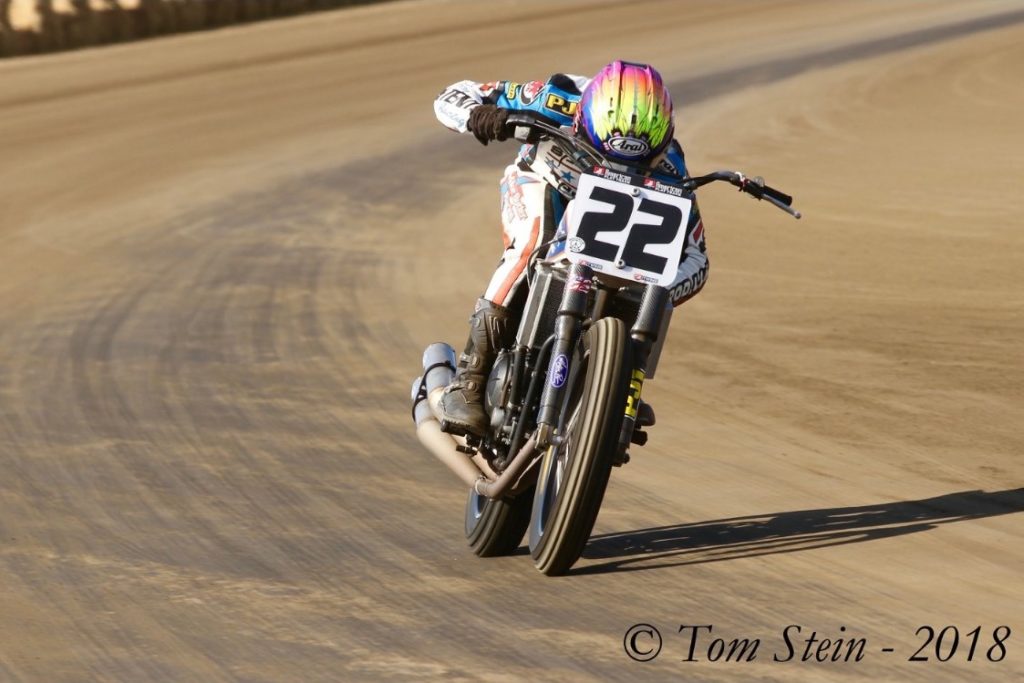
he feels the electricity surging through his veins.
James is back on the third row but fortunate to be gridded on the groove.
He does slow pulls on the throttle before the start,
thinking back to those people who said he couldn't.
Of all the long nights on lonely highways traveling,
the sacrifice and suffering for his dream,
the girlfriends who got tired of waiting.
A calm aggression comes over him as he watches the flagman.
The lights go green and all hell breaks loose.
The sound and fury,
the pack of the sixteen motorcycles charges toward the first corner.
Some of those not lucky to be on the groove,
spin up and slide down the banking,
they're just on for the smoke show.
Through the dust and madness,
James surges forward and latches onto Bronson's rear wheel.
He is off to a great start.
The roaring engine set the rhythm in this dance that is 'The Main'.
James tells me 'you gotta go slow to go fast here.'
How 'you gotta chase it to find it.'
That sometimes 'the biggest thing you can change is how you ride her.'
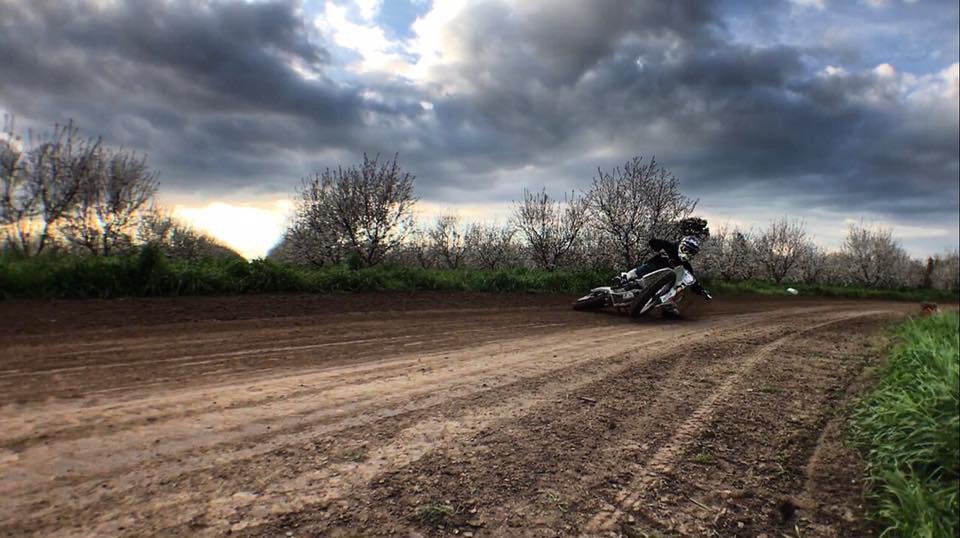
At home, he has no internet or television - just a coffee pot.
After being a rockstar cowboy on Saturday night, on Monday mornings
he is just a guy changing swimming pool filters
or helping out at the farm.
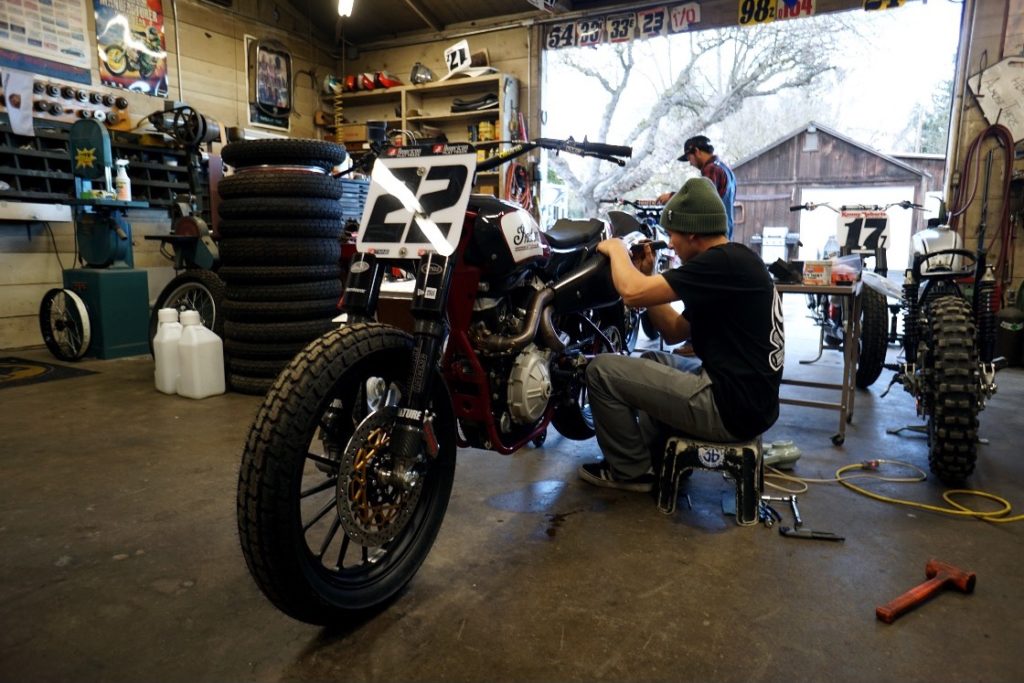
as if praying to the gods of speed.
It's after qualifying and as he works,
he tells me that he didn't want to bump down to singles class,
how he dreamt his whole life to race the premier twins class.
Realizing there are only so many factory seats and motorcycle industry sponsorships,
he reached out of the box to find sponsorship help from the agricultural
industry, to a company named 'Pure Crop'.
Which makes a natural plant-based biostimulant, insecticide and fungicide made
of food grade oil with zero OSHA rating, that is safe for children and pets.
James is a fourth generation almond farmer aware of what Pure Crop does.
I give James credit for chasing down a unique sponsor
to keep his dream alive. James knows he might not ever get rich racing but
he's living a life others only dream of.
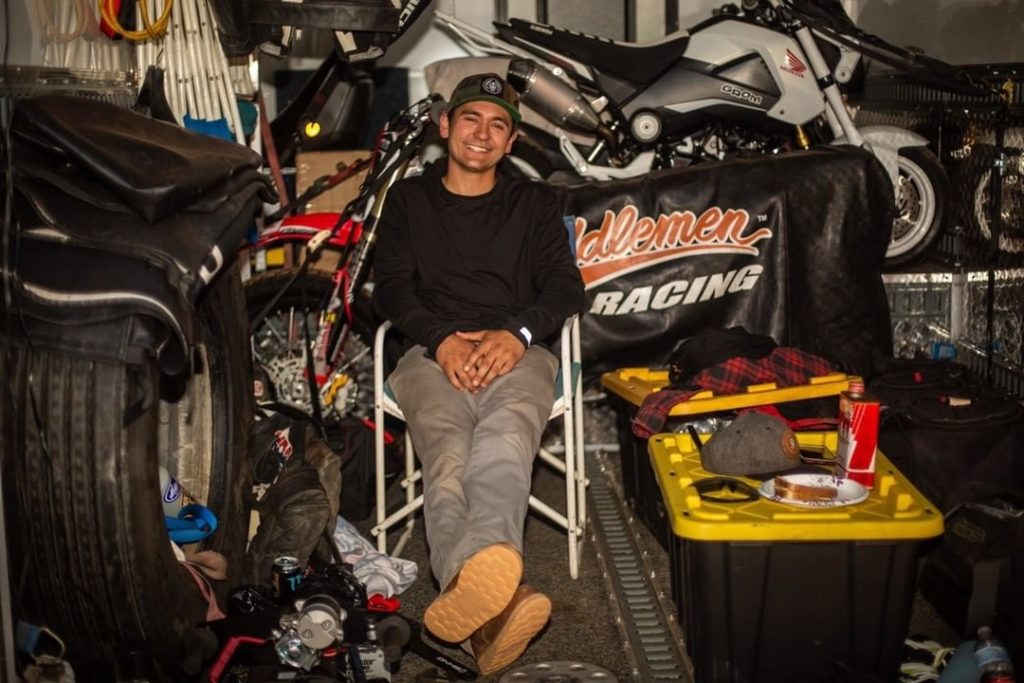
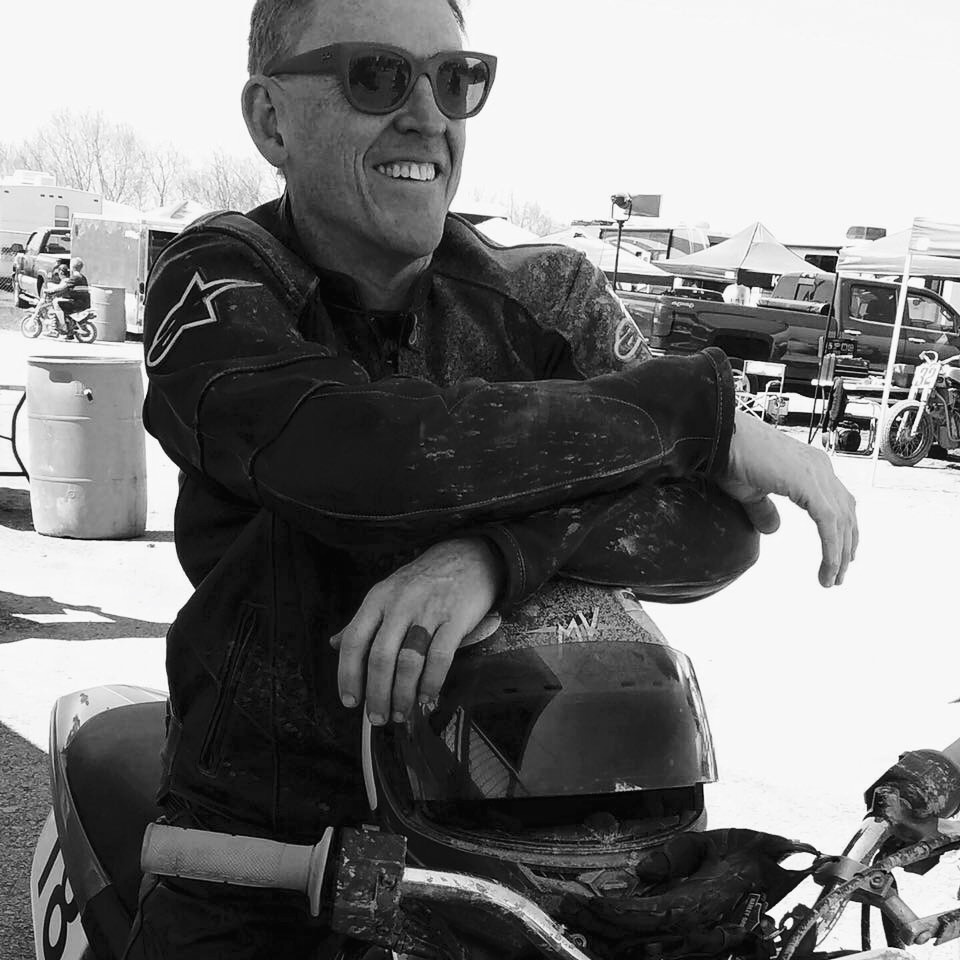
Hooligan Racing: Gateway Drug to Flat Track
It's hard to get started in off-road motorsports unless you've grown up around them. What's an urban cowboy to do? Motorcycle dealerships don't sell race-ready flat trackers. When I queried, a used 450cc race bike was recommended as a starting platform. Several racers offer to sell me their old machines ($4-6k range). The upside was 'ready to race!', while the reality was 'ridden hard and put away wet'. Another path is building your own racer from a new 450cc motocross bike (about $15k) . Either way seemed an expensive gamble - what if I didn't like racing, or couldn't hang?
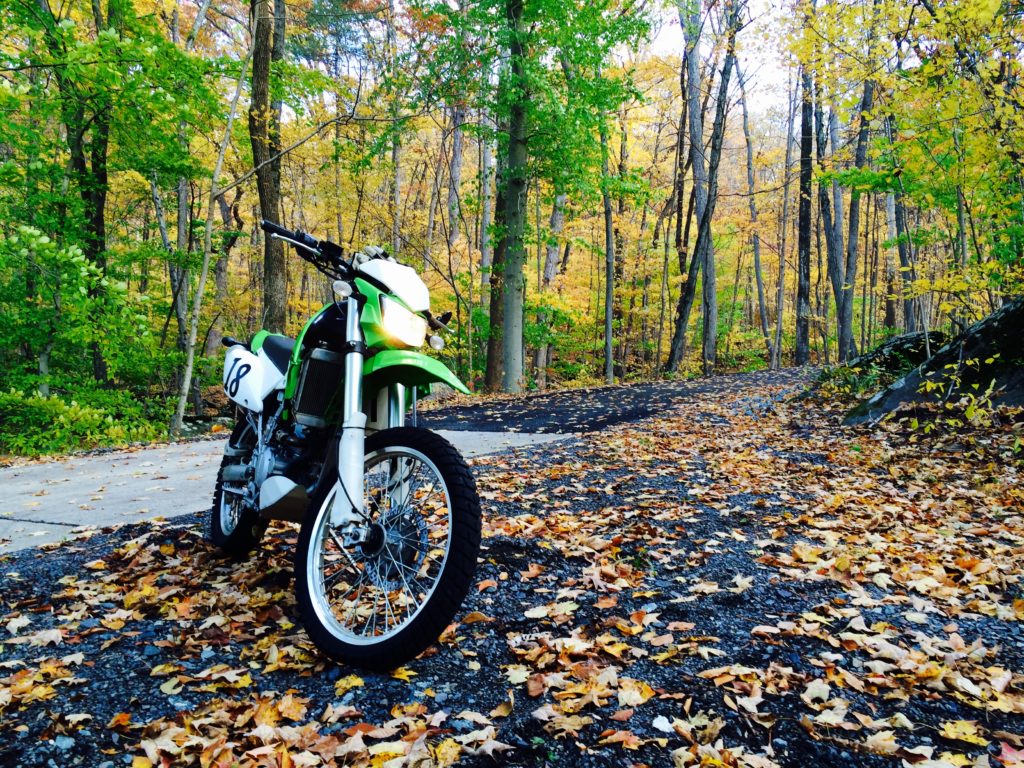
I took the quick and easy path. In the 1930s, riders simply removed the lights from their street bikes to go racing. Why not buy a 400cc dual-purpose motorcycle? I could try flat track racing, and if I didn't like it, I could always use this as my street bike.
I asked advice from Patrick, who races dual sport events; surprisingly, he felt a Kawasaki KLX250s would be a great choice. "It's lighter, almost as fast as a 450cc, and handles well." I found a clean, low-mileage KLX on Craigslist. The seller bragged about the bike's torque - I tried not to roll my eyes. But he was right; the Kawasaki was delightful on everything shy of Interstates. Its light handling matched well with the surprising torque of its 250cc single-cylinder engine. I had a ball cutting through traffic on the way to work, and the fun little KLX reminded me why I got involved with motorcycles in the first place. To get her ready for racing, I ordered a lowering link for the rear suspension and more appropriate tires.
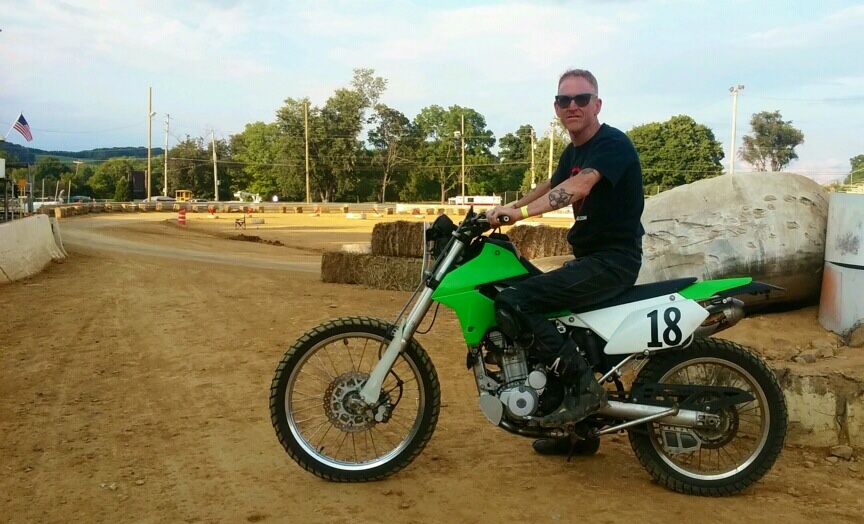
I'm lucky to have the ear of one of the fast guys of American Flat Track Racing, so I stopped by Jake Shoemakers' place.. "Can you tell me if the suspension adjustments are correct?" He took a look at the bike and said I was crazy. We checked things out and made a few tweaks. After a short ride on his test track, he slid to a halt beside me; 'This is a fun little bike - Get On!' I thought he wanted to set the bike up for two-up street riding.
Yes, I am that dumb. I just about fell off the back when he dropped the clutch in second gear. We entered the first corner so fast, going past the apex, and as he slammed on the rear brake, the KLX snapped sideways. I was sure we were going to wreck. Who knew you could flat track with a passenger!? He put in a few quick laps two-up, faster then I could ride solo. I was humbled. Real racers are real fast.
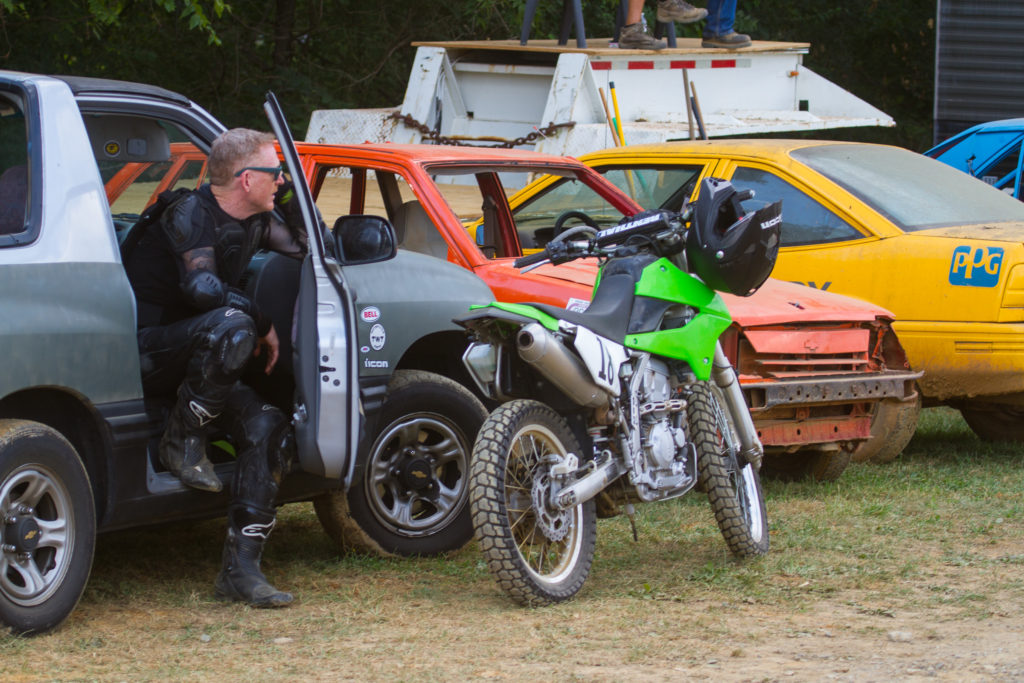
I got up early one Saturday morning. removed the lights and other street gear, and zip-tied a front number plate. I was ready for my first race. The real racers looked at me funny, but I had a great time - and didn't finish last either. I put the street gear back on, and rode to work on Monday, still smiling from my weekend adventure. This is the spirit of Hooligan Racing.
Several weeks later, after an 11-hour workday, I climbed on my KLX to ride home as it started to rain. The rush hour traffic was heavy. When an oncoming police car charged around the corner in full siren, the car in front of me slammed on the brakes. My bike slid as I scrubbed off speed; trees to the right, nowhere to go. I clipped the left edge of the bumper and sailed over the handlebars. As I flew through the air, I saw the shocked look on the officer's face in the oncoming police car. My right arm bounced off the side of his car, and I landed heavily on my chest. I glanced off the curb, flipped through the air, and landed on my back in the weeds. The cop car ran over my KLX.
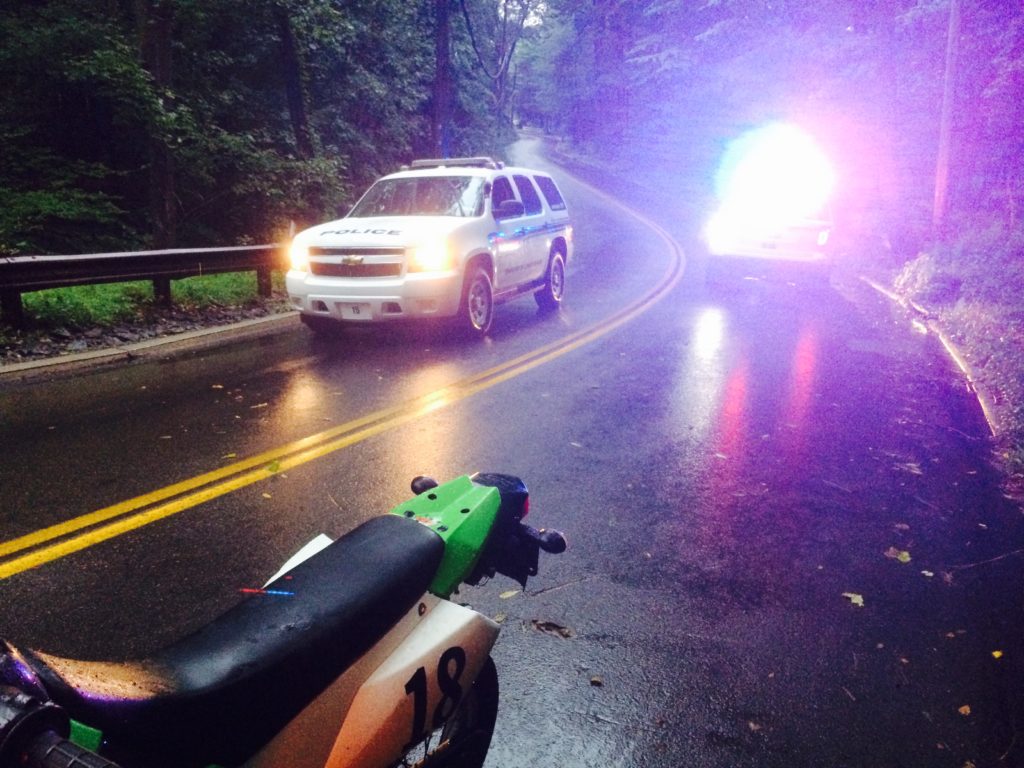
All I heard was the rain hitting leaves, and I opened my eyes to see light filtered through the trees. Did I die? The officer came running, yelling into his microphone "Yeah-I f****** ran him over - he's probably dead". I startled him by sitting up. He offered an ambulance but I said I was OK. I took off my helmet and was relieved to see my iPhone survived the impact. I called my daughter Olive, who was waiting for me at home. "I've had a problem with the bike and I'm running late. There are snacks on shelf - I'll make dinner when I get home." The Officer looked shocked that I could be so calm. I picked up my bike and surveyed the damages. Plastics trashed, radiator bent but not leaking, shifter damaged but still able to move. I called my shop. "Yeah, I'm broken down at the bottom of the hill on Conshohocken State Rd. Grab some tools - I'll need a breaker bar & large channel locks." We straightened things out by the side of the road, in the rain. The KLX is a rugged little machine; I rode it home and had dinner with Olive, glad to be alive.
Call me superstitious, but I felt I'd used my luck up on that bike. I sold the KLX and moved on to a different machine.
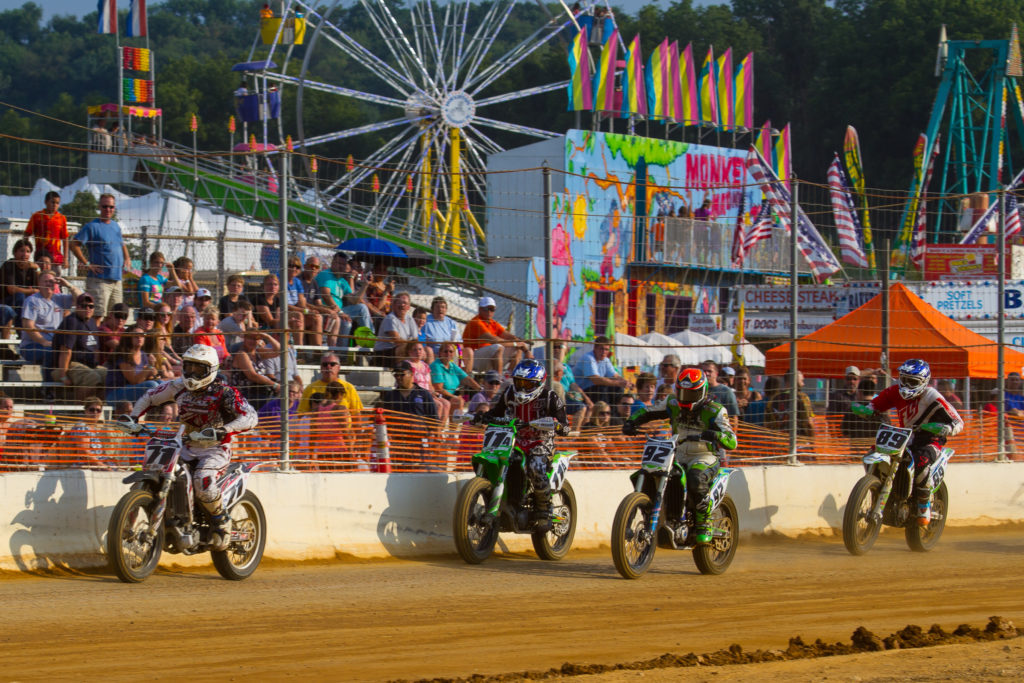
Roland Sands Design & Indian Motorcycles soon took Hooligan Racing to the main stage - Daytona. Through the kindness of these guys, I actually raced an Indian Scout at night under the lights at Daytona, on TV! Sometimes life is better than my wildest dreams. Hooligan race bikes were later defined as 750 cc or larger twins, stock frames and dual shocks. This democratic concept helped bring new interest and more people to the sport. The faithful cringed but the crowds love Hooligan racing, and those who tried Hooligan racing found new respect for the pros. Manufacturers of motorcycles and suppliers of aftermarket parts could see their wares being used in front of large audiences and television. Hooligan racing is an excellent gateway drug to the flat track scene.
